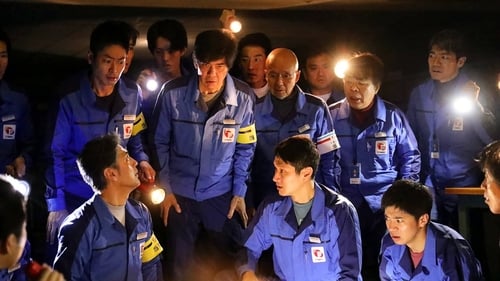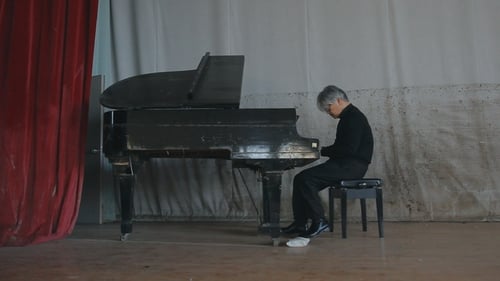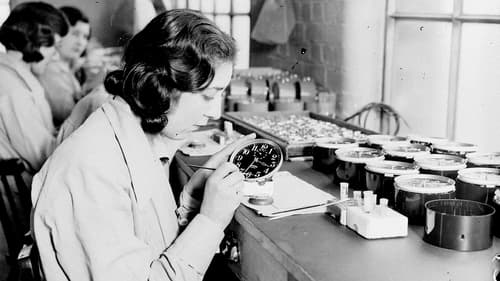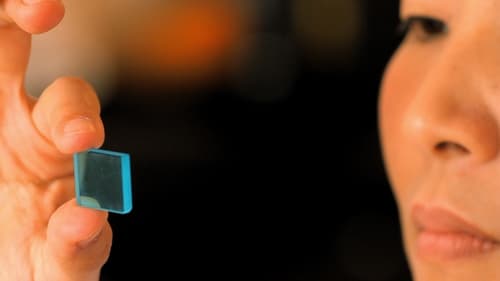Fukushima, chronique d'un désastre (2013)
Género : Documental
Tiempo de ejecución : 0M
Director : Akio Suzuki, Akihiko Nakai
Sinopsis

Los trabajadores de las instalaciones de Fukushima Daiichi en Japón arriesgan su vida a diario permaneciendo en la central nuclear para evitar su desintegración total después de que la región haya sido totalmente devastada por un terremoto y un posterior tsunami en 2011.

La cinta dirigida por Stephen Nomura Schible se centra en la vida del compositor de renombre Ryuichi Sakamoto. Por tanto, este documental revive la prolífica carrera de este artista, quien lleva trabajando más de cuatro décadas. De esa forma asistimos a la evolución de Sakamoto, desde sus inicios con el techno-pop hasta que se convirtió en un ganador de la Academia, consiguiendo el Oscar por ?El último emperador?. Pero además de su dedicación al mundo de la música, Sakamoto ha demostrado ser también una figura muy importante en el movimiento social contra las nucleares del lugar. Eric Nyari y Yoshiko Hashimoto son los productores de la película, mientras que Neo Sora y Tom Richmond son los directores de fotografía que acompañan a Stephen Nomura Schible en este viaje. (ECartelera)

¿Qué es lo que salvo a la ciudad de Tokyo del desastre nuclear? Se permite acceder a un equipo de periodistas extranjeros -incluyendo al reportero Pio d'Emilia- a las instalaciones de la planta nuclear de Fuskushima-Daiichi; han estado esperando durante dos años para desvelar la verdad que se encuentra oculta tras los muros de esa planta. El ex-primer ministro Naoto Kan nos traslada de nuevo a los días del accidente y narra los eventos tal y como sucedieron entonces. Las animaciones manga representan la historia de Japón, mientras que las reconstrucciones digitales permiten que aflore el lado más oscuro de esta historia, demasiado compleja tanto social como científicamente. Ya no hay meros sospechosos: muchos de los que fueron acusados han de ser responsabilizados por la catástrofe.

The exciting story of the splitting of the atom, a scientific breakthrough of incalculable importance that ushered in the nuclear age, has a dark side: the many events in which people were exposed to radiation, both intentionally and by accident.

Una joven alemana entabla amistad con una mujer mayor japonesa durante un tour por la región de Fukushima, una zona afectada por el terremoto en del 2011 en Japón. Marie (Rosalie Thomas) ha decidido viajar de Alemania a Fukushima para cambiar su vida. Con su trabajo en la organización Clowns4Help espera llevar un poco de esperanza a los supervivientes del desastre nuclear. Pronto se da cuenta que no está capacitada para hacer más llevadera la tragedia de los afectados. Pero en lugar de huir decide quedarse con la arisca anciana Satomi (Kaori Momoi), la última geisha de Fukushima que decidió volver a su casa en ruinas en la antigua zona de exclusión. Dos mujeres totalmente diferentes pero que, cada una a su modo, están atrapadas en el pasado y deben aprender a liberarse de la culpa y de la carga de los recuerdos.

Six months after the explosions at the Fukushima nuclear plant and the release of radiation there, Professor Jim Al-Khalili sets out to discover whether nuclear power is safe. He begins in Japan, where he meets some of the tens of thousands of people who have been evacuated from the exclusion zone. He travels to an abandoned village just outside the zone to witness a nuclear clean-up operation. Jim draws on the latest scientific findings from Japan and from the previous explosion at Chernobyl to understand how dangerous the release of radiation is likely to be and what that means for our trust in nuclear power.

At 2:46 PM on March 11, 2011, the Fukushima Daiichi Nuclear Power Plant experiences a black out due to the aftermath of the Tōhoku earthquake and tsunami. The cooling system fails at the nuclear power plant and the temperature of the nuclear reactor rises. The worst case is coming. Scientists face an unexpected situation and government officials are confused by lack of information. Residents says goodbye to their hometown before evacuating.

In the aftermath of the Fukushima nuclear disaster, a Japanese farmer ekes out a solitary existence within the radiation red zone.

After the 11 March 2011 tsunami and nuclear disaster, residents of Futaba, a town in Fukushima Prefecture, are relocated to an abandoned high school in a suburb of Tokyo, 150 miles south. With a clear and compassionate eye, filmmaker Atsushi Funahashi follows the displaced people as they struggle to adapt to their new environment. Among the vivid personalities who emerge are the town mayor, a Moses without a Promised Land; and a farmer who would rather defy the government than abandon his cows to certain starvation.

Naraho town in Fukushima Prefecture is on the front-line of the government-funded nuclear power plant decommissioning work. Kokuhei Kusunoki is transferred from Aizu Wakamatsu City to Naraho Town to take over the Disaster PR Division. Murai takes Kokuhei around Fukushima including areas washed away by the tsunami. They examine the still incomplete railway lines, the unfinished decontamination area and villages in the danger zone, where deadly cesium continues to pile up. One day Kokuhei is told to organize a party to celebrate the professor who has been appointed as deputy director of the Atomic Energy Research Institute.

Chernobyl 1986. A nuclear reactor exploded, spewing out massive quantities of radiation into the atmosphere. Within days, the pollution had spread across Europe. Living on land contaminated with radioactivity would be a life-changing ordeal for the people of Belarus, but also for the Sami reindeer herders of central Norway. It even affected the Gaels of the distant Hebrides. Five years ago there was a meltdown at the Fukushima reactor, and thousands of Japanese people found their homes, fields and farms irradiated, just as had happened in Europe. This international documentary, filmed in Belarus, Japan, the lands of Norway's Sami reindeer herders and in the Outer Hebrides, poses the question: what lessons have we learned?

Fukushima's Minami-soma has a ten-centuries-long tradition of holding the Soma Nomaoi ("chasing wild horses") festival to celebrate the horse's great contribution to human society. Following the meltdown of the Fukushima Daiichi Nuclear Power Plant in the wake of the March 11, 2011 earthquake and tsunami, local people were forced to flee the area. Rancher Shinichiro Tanaka returned to find his horses dead or starving, and refused to obey the government's orders to kill them. While many racehorses are slaughtered for horsemeat, his horses had been subjected to radiation and were inedible. Yoju Matsubayashi, whose "Fukushima: Memories of the Lost Landscape" is one of the most impressive documentaries made immediately after the disaster, spent the summer of 2011 helping Tanaka take care of his horses. In documenting their rehabilitation, he has produced a profound meditation on these animals who live as testaments to the tragic bargain human society made with nuclear power.

Every nuclear weapon made, every watt of electricity produced from a nuclear power plant leaves a trail of nuclear waste that will last for the next four hundred generations. We face the problem of how to warn the far distant future of the nuclear waste we have buried --but how to do it? How to imagine the far-distant threats to the sites, what kinds of monuments can be built, could stories or legends safeguard our descendants? Filmed at the only American nuclear burial ground, at a nuclear weapons complex and in Fukushima, the film grapples with the ways people are dealing with the present problem and imagining the future. Part observational essay, part graphic novel, this documentary explores the idea that over millennia, nothing stays put.

The referendum whether nuclear power plants should be banned has been held in Japan. People must decide their future.

The Radiant explores the aftermath of March 11, 2011, when the Tohoku earthquake triggered a tsunami that killed many thousands and caused the partial meltdown of the Fukushima Daiichi nuclear power plant on the east coast of Japan. Burdened by the difficult task of representing the invisible aftermath of nuclear fallout, The Radiant travels through time and space to invoke the historical promises of nuclear energy and the threats of radiation that converge in Japan in the months immediately following the disaster.

TEPCO's Fukushima Daiichi Nuclear Power Plant is the site of one of history's worst nuclear disasters: the meltdown of three nuclear reactors. The decommissioning program in Japan learns from the Three Mile Island decommissioning in the US after the nuclear plant accident in 1976 in Pennsylvania.

December 21, 2015. The image of a fox was captured by a camera inside the unit 2 building at Fukushima No.1 nuclear power plant... A film-essay about contemporary Japan in the aftermath of March 2011 earthquake.















